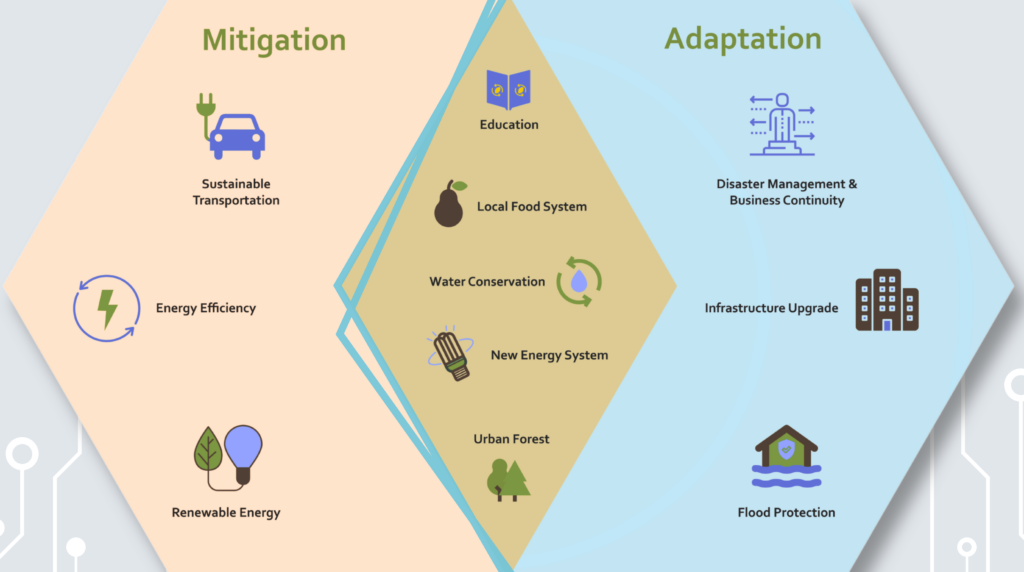- Category: Projects
- Industry: Agri-Food, coffee temperature vulnerability, future suitability of coffee, sustainable coffee production
Roasted by Climate Change: The Dire Consequences for Coffee Production

Impacts of Climate Change on Coffee Production
Coffee is one of the most traded commodities globally, with $30.8 bn of coffee traded worldwide in 2020.¹ Coffee production is concentrated in low-income countries, the largest coffee producers being Brazil ($ 5 bn), Vietnam ($ 2.2 bn), and Colombia ($ 2 bn), while the European Union and the United States of America are the largest consuming and importing markets.
Despite the expansion of the coffee market, the coffee industry and the livelihoods of millions of smallholder producers are threatened by the effects of climate change on coffee production. In 2021 droughts severely impacted Brazil's coffee production which plunged by around 24% compared to the previous year ², while rising temperatures and shifting rainfall patterns may cost Vietnam 50% of its current Robusta coffee production areas by 2050. ³ The frequency and intensity of such extreme events are expected to increase due to climate change.
Coffee plants have a lifespan of several decades and are highly sensitive to climate change, which will impact the suitability of growing regions, and lead to shifts in producing regions. Furthermore, climate change will also affect the seasonality patterns in many producing regions in the world, however with different local impacts on each producing region and coffee varieties worldwide.
A recent global study on the current and future suitability of coffee Arabica showed that the highest suitability region will decrease by more than 50% by 2050 under a medium climate-change scenario (RCP 4.5) and that only a few regions are expected to benefit from climatic changes. ³
A forward-looking and predictive analysis of the impact of climate change on coffee crops is thus necessary to design and implement efficient climate change adaptation measures, to support long-term agricultural planning, and to build up climate-resilient and future-proof coffee value chains.
Case Study: Climate Threat on Coffee Production in Vietnam
Vietnam is the second largest coffee producer in the world and is the largest Robusta-growing origin. This country thus holds an important role in global coffee production and has a significant effect on global markets. 93% of Vietnam's coffee production is Robusta with 80% produced in the Central Highlands region. ⁴ This concentrated production makes the Vietnamese coffee sector highly vulnerable to potential adverse impacts of climate change. While Robusta is generally known to be more climate resilient than Arabica, seasonal climate shifts and changing temperature and precipitation patterns can nevertheless impact the quality and quantity of the harvest.
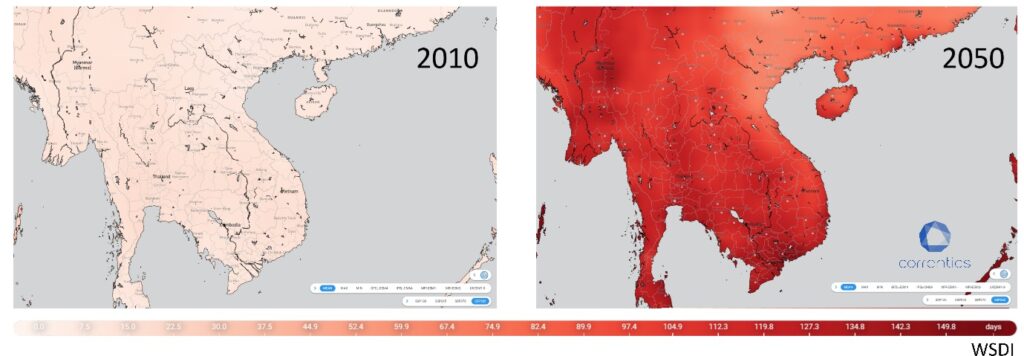
Fig 1: WSDI in 2010 vs. 2050 under the shared socio-economic pathway SSP5-8.5. WSDI: Warm spell duration index which is the annual count of days with at least 6 consecutive days when daily maximum temperature>90th percentile (Reference period: 1981-2010). © Correntics
The price smallholder farmers can achieve for their coffee is strongly influenced by bean characteristics (e.g. bean size and potential defects) that depend on the weather and climate during the different growing stages. A deep understanding of the impact of climate change on coffee production is thus highly desirable to understand not only local impacts for farmers but also global market impacts.
For this purpose, we used our Correntics risk-analytics tools to assess the impact of climate change on coffee crops in Vietnam in the future and identify the underlying risk drivers.
We show that temperature increase due to climate change threatens coffee production across the whole country and can lead to significant bean damages, production losses, and supply shortages, with the southern regions being impacted more severely (see Figures 1 and 2).
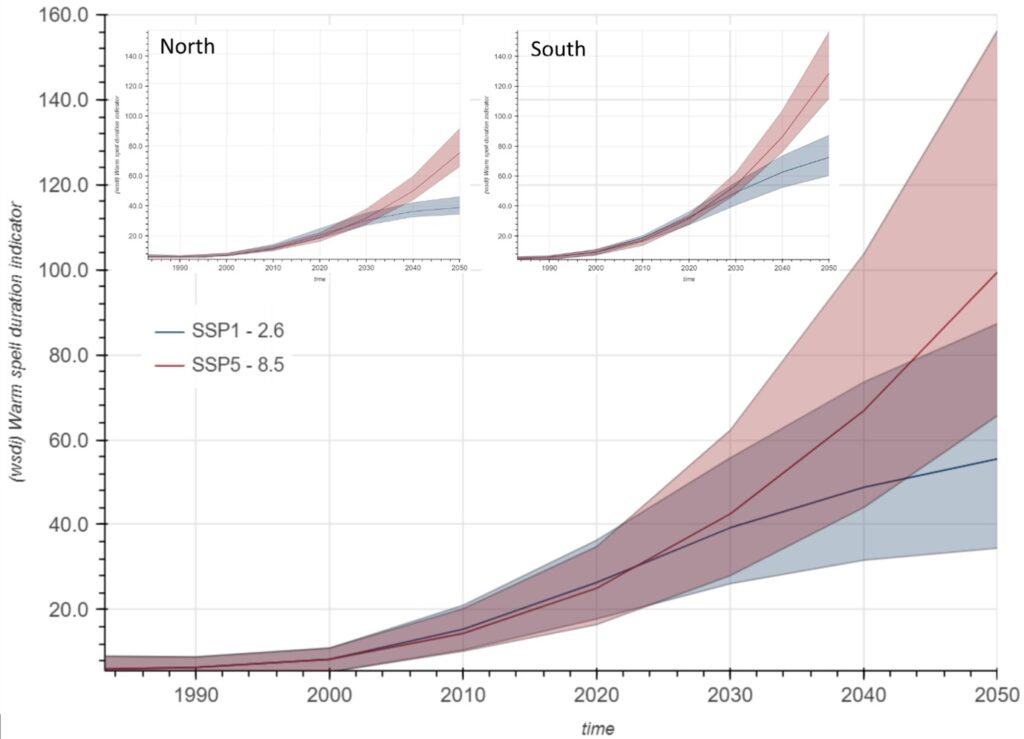
Fig 2: WSDI change in the future in Vietnam under the SSP1-2.6 (low-emission scenario) and SSP5-8.5 (high-emission scenario). © Correntics
Climate Risk Analysis on Coffee Robusta in the Lam Dong Province
Using coffee Robusta and regional-specific vulnerability functions, we translate climate hazards into a risk on coffee production, focusing our analytics on the Lam Dong province of the Central Highlands region.
We first assess the impact of temperature on Robusta coffee beans size. The increase of the mean maximum temperature by 1.3°C expected in 2050 versus 2010 during the flowering season (see Fig. 3) leads to an increase of the likelihood of small bean size by more than 30% for a severe climate change scenario (SSP5-8.5). This in turn has an impact on the coffee quality and taste and thus on the coffee price and farmers’ livelihoods.
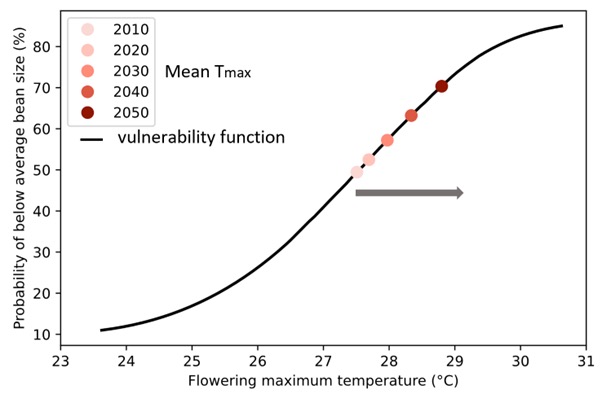
Fig 3: Impact of temperature under SSP5-8.5 on coffee bean size evaluated from a regional- and crop-specific vulnerability function. The vulnerability function ⁵ is used to assess the damage to coffee beans under a warming climate. ©Correntics
Change in precipitation patterns is also expected to affect coffee bean characteristics. The expected total rainfall is not expected to change significantly in the next decades (see Fig. 4 upper panel), however, the trends are different for the flowering, growing, and harvest seasons (see Fig. 4 lower panel).
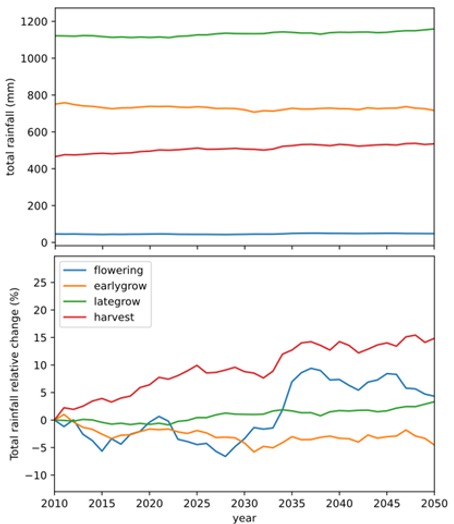
Fig 4: Change in annual total precipitation (upper panel) and relative change in total precipitation with respect to 2010 (lower panel). ©Correntics
In particular, the increase of the mean precipitation during the harvest season by 15% expected in 2050 leads to an increase in the likelihood of bean defects by around 10% (SSP5-8.5), see Fig. 5 (left). On the contrary, the decrease of the mean precipitation during the early growing season by 5% expected in 2050 leads to a decrease in the likelihood of small bean size by around 9% (SSP5-8.5), and thus has a positive effect on coffee production, see Fig. 5 (right).
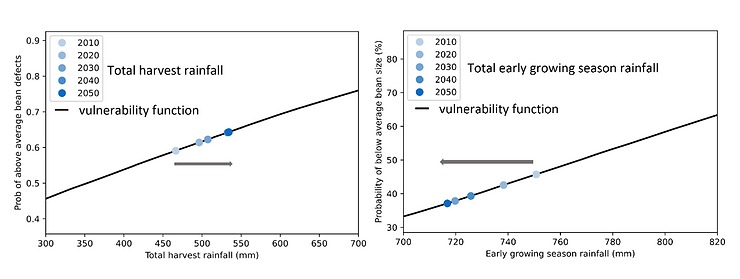
Fig 5: Left: Impact of precipitation under SSP5-8.5 on coffee bean defects evaluated from a regional- and crop-specific vulnerability function. Right: Impact of precipitation during the early growing season under SSP5-8.5 on coffee bean size evaluated from a regional- and Robusta-specific vulnerability function. The vulnerability function⁵ is used to assess the damage to coffee beans. ©Correntics
Summary
Our analysis showed the impact of temperature and precipitation changes on coffee bean characteristics. Using Correntics’ climate-risk analytics capabilities, we show that the effect of relevant climate factors may be different depending on the seasons and regions, and can either have a negative or positive impact on coffee-bean characteristics. Crop-specific climate risk insights can support strategic planning like geographic diversification and the selection of climate-resilient varieties to build a resilient agriculture sector.
